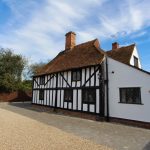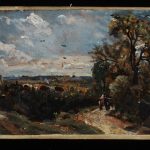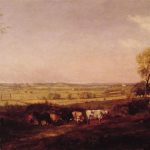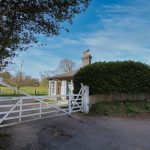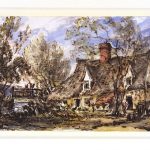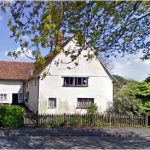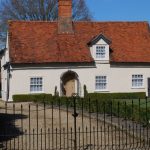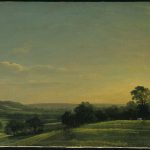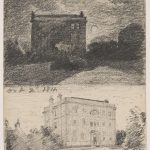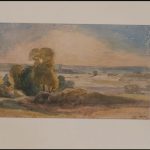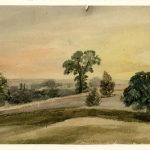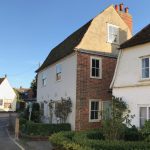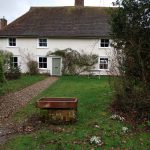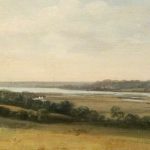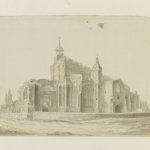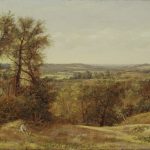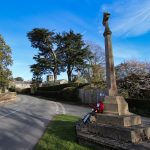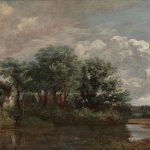This painting is also known as ‘A cart on the road from East Bergholt to Flatford’
Frederick was sent out to Singapore as part of the 4th Battalion of the Suffolk Regiment, disembarking there on 29th January 1942. He was killed in the fighting on the island, two days before the British and Empire forces surrendered to the Japanese.
The view is from the junction of Fen Lane, looking west along the Stour Valley, the track Constable had taken each day to the Grammar School in Dedham.
Alfred was serving in the 5th Battalion of the Suffolk Regiment, when he was captured by the Japanese at the surrender of Singapore in February 1942. The Japanese used their prisoners as slave labour, subjecting them to brutal treatment and inhuman conditions. Alfred is one of two Bergholt men who died during the construction of the notorious “Death Railway” between Burma and Siam.
Bridge Cottage with Flatford Bridge behind to the left.
Constable dated this drawing 12 November 1832 and it comes from a sketchbook that he first used in 1831
The first of the East Bergholt men to die in the Second Worl War, Edward was also the second youngest. His ship - the destroyer HMS Thanet - was sunk by the Japanese off the coast of Malaya. It is not certain whether Edward lost his life in the sinking or shortly afterwards, as it is widely believed that a number of the survivors were murdered by the Japanese.
This view up the Stour valley towards Stoke-by-Nayland with Langham just out of sight on the left, believed to have been painted behind West Lodge, home at the time to dear friend and elderly neighbour Mrs Sarah Roberts.
The youngest of the men commemorated on the Memorial (by just one month), John served with 166 Squadron in Bomber Command. He was killed along with four other members of his crew when their Avro Lancaster was shot down during an operation against Dortmund on the night of 22/23 May 1944. Two other crew members managed to bail out and became Prisoners of War.
Two pencil sketches of East Bergholt House, the Constable family home, inscribed by the artist ‘below the house by moonlight’
Called up in October 1939, Edgar served as a Driver with the Royal Engineers but was captured by the Japanese when Singapore surrendered in February 1942. He subsequently endured 20 months of slavery in barbaric conditions before succumbing to disease on the island of Formosa (now called Taiwan).
This view of Dedham Vale drawn from the top of Fen Lane, the track Constable had taken each day to the Grammar School in Dedham.
Serving in the 5th Battalion of the Suffolk Regiment, Sidney was captured at the surrender of Singapore in February 1942. As a Prisoner of the Japanese, he was used a slave labour and subjected to brutal treatment in inhuman conditions. Sidney died during the construction of the notorious “Death Railway”, leaving a wife and two young children.
As part of the 4th Battalion of the Suffolk Regiment, William disembarked in Singapore on 29th January 1942. He was killed in the last days of the fighting to defend the island, just before it surrendered to the Japanese.
An Admiral in the Royal Navy, Sir William Wake-Walker played a leading role in the evacuation from Dunkirk and also the hunt for the German Battleship, Bismarck. From 1942 to 1945 he served as Third Sea Lord and Controller of the Navy.
Although the painting location for this piece is not exactly known, the view looks out across the valley to the south bank of the Stour towards Manningtree and Mistley.
The red bridge is that of Catawade and the bridge to the right was demolished in 1911.
It has been suggested that the ship in the picture may have been the ‘Telegraph’, owned by Constable's father and moored at Mistley.
Pen and watercolour sketch of East Bergholt church with yellow, blue and red wash, squared for enlargement with pencil, one of Constable's earliest sketches in the village.
The son of a career Army office who had been one of the early pioneers in the use of the Tank, Peter served in Italy with the 4th Queen’s Own Hussars, part of the Royal Armoured Corps. He was killed near the town of Coriano during the Allied attempts to breach the German defences forming part of the Gothic Line.
A view from Flatford Lane over the valley to Dedham, with Dedham Church clearly to the centre.
One of the first views of Willy Lott's House, from Constable's studies in the summer and autumn of 1802

